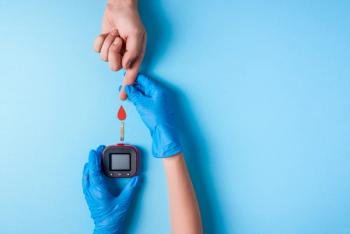
Telehealth Program Enhances Engagement, Glycemic Control in Rural Patients With Diabetes
Presented during ADA’s 80th Scientific Sessions, results from an analysis of a 6-month telehealth intervention showed sustained improvements in glycemic control in patients with diabetes.
A study presented at the American Diabetes Association's (ADA) 80th Scientific Sessions demonstrated promising results related to adherence, engagement, and awareness of HbA1c control in rural patients with poorly-controlled diabetes who participated in a telehealth program.1
Coauthor Elizabeth A Kobe, BS, MD candidate at Duke University Medical School, presented the findings, highlighting demographic significance of the study. Kobe and her colleagues underlined that access to specialty care and intensive self-management programs are severely limited and lead to poor outcomes in patients with diabetes. Health care has recently trended toward numerous telehealth technologies, which function to expand access and opportunity for addressing health conditions, prominently diabetes management.
Investigators assessed the potential benefits and drawbacks of employing telehealth resources in routine practice through their study, which evaluated adherence to Advanced Comprehensive Diabetes Care (ACDC), a 6-month intensive telehealth intervention for patients with poor glycemic control. ACDC incorporated telemonitoring, self-management support, and clinician-guided medication management through standard Home Telehealth (HT) equipment. Investigators restructured the existing Veterans Health Administration (VHA) HT platform to cater to patients with uncontrolled type 2 diabetes, despite receiving routine care.
In a prior randomized trial, ACDC showed favorable results, suggesting the potential for improved diabetes outcomes in rural populations.
“We are pleased to see that the intervention was well-suited for delivery in clinical practice and that it remained effective in real-world settings,” Kobe said.2 “When telehealth interventions are designed to leverage existing resources, they can greatly improve diabetes care in underserved rural populations. We also believe this design-minded approach can extend to other chronic diseases.”
The multi-site study assessed 125 rurally-located patients with diabetes using the Reach, Effectiveness, Adoption, Implementation, and Maintenance (RE-AIM) framework between 2017 and 2019. Across the 5 rural VHA sites, mean HbA1c improved significantly from 9.25% at baseline to 7.89% at 6 months, additionally persisting at 12 and 18 months. The study showed acceptable implementation of the program at each site: an average of 8 to 10 of 12 scheduled ACDC calls were completed. Kobe also noted that the investigators will continue to analyze barriers and facilitators to adoption at each of the sites.
The study additionally reported demographic data related to the rural participants. Of the 125 patients, 94% were male, 89% white, and 71% were classified as rural or highly rural, “which is a positive reflection of the fact that we targeted VAs with large rural populations specifically,” Kobe said in the presentation.
Data from qualitative interviews found that ACDC enhanced patient engagement and improved awareness of glycemic controls; however, the program did moderately increase provider workload
Kobe discussed the reasons for the program’s success, which include its strategic intervention design that leveraged existing HT staffing and standard HT equipment and integrated naturally with the electronic health records. Additionally, the program was developed through an iterative process, focusing on 1 site and then expanding each year, as well as utilizing patient feedback.
“Despite the drastic changes that [coronavirus disease 2019] has forced health care systems to make, ACDC delivery has continued unabated,” Kobe added.
She concluded by saying that the program has made a substantial difference for rural patients with diabetes and is well-positioned for further dissemination.
References
1. Kobe EA, Lewinski A, Danus S, et al. Implementation of an Intensive Telehealth Intervention for Rural Patients with Uncontrolled Diabetes. Presented at: The American Diabetes Association 80th Annual Scientific Sessions; June 12-16; online.
2. Intensive Use of Telehealth Improves Glycemic Control Among Rural Patients with Type 2 Diabetes. American Diabetes Association; June 12, 2020. Accessed June 12, 2020.
Newsletter
Pharmacy practice is always changing. Stay ahead of the curve with the Drug Topics newsletter and get the latest drug information, industry trends, and patient care tips.































































































































